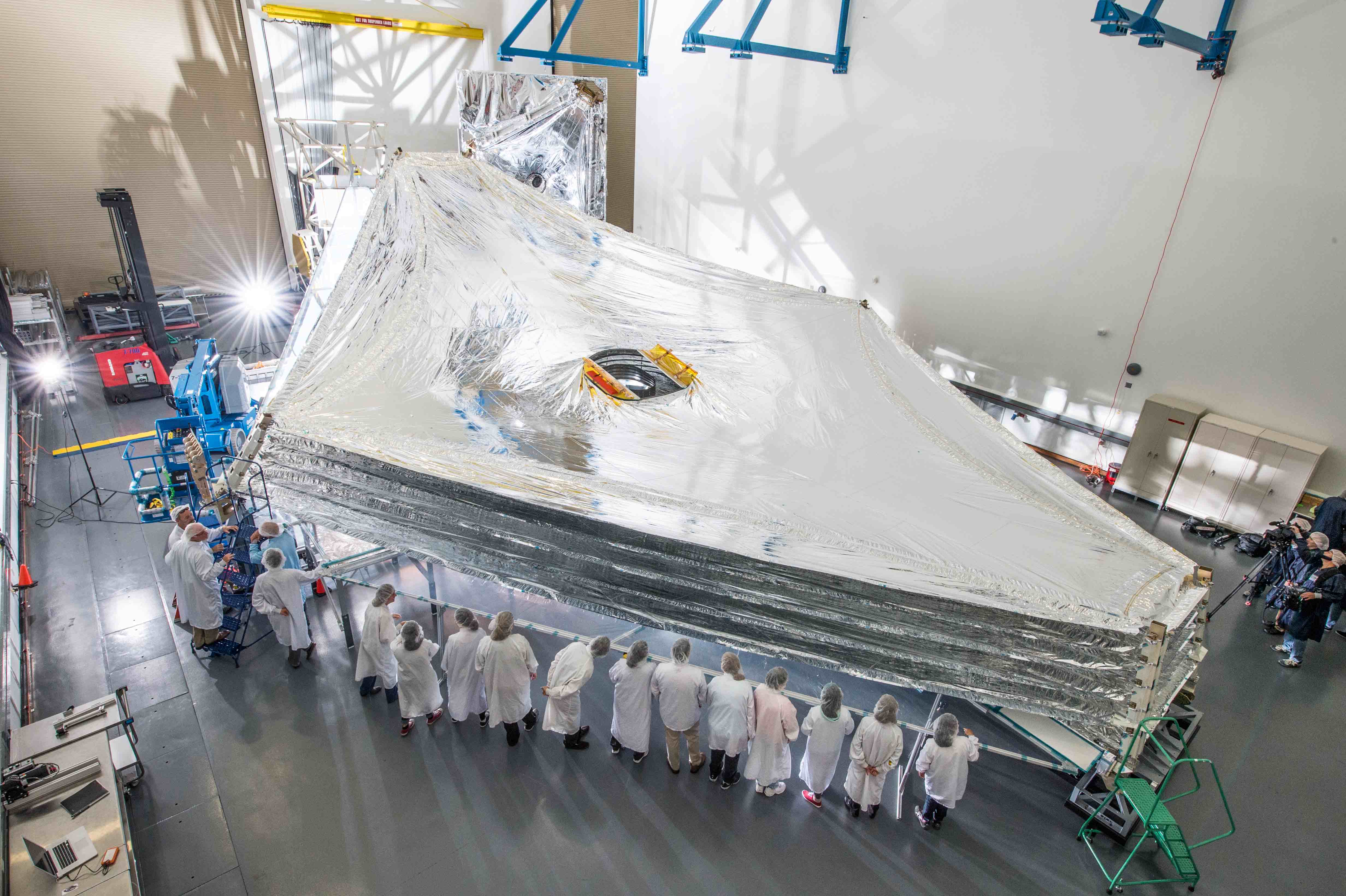It’s almost time.
Soon the James Webb Space Telescope will be on its way to the Sun/Earth L2 Lagrange point and will begin its at least 5-year science mission. Really, it’s going to happen.
Despite several delays since the program began in 1996 and a budget that has exceeded the original by several billion dollars, the launch of the JWST seems close at hand. That is if you consider almost a year away (the new planned launch date is October 31, 2021) to be close.
In advance of the launch, many tests are being performed to ensure its proper operation once outside of Earth’s gravity well, including the unfolding of the sunshield that will be used to keep the telescope at an operating temperature of ~ -220°C (~ -370°F).
This was tested recently with a successful complete unfolding and tensioning of the sunshield. This unfolding involves 139 actuators, eight motors, and thousands of other components working together to complete the process. What could possibly go wrong? Despite the myriad potential problems, all went well, and James Webb Space Telescope will soon be on its way to liftoff, provided all other tests go well.
“Congratulations to the entire team. Due to Webb’s large size and stringent performance requirements, the deployments are incredibly complex. In addition to the required technical expertise, this set of tests required detailed planning, determination, patience and open communication. The team proved that it has all these attributes. It’s amazing to think that next time Webb’s sunshield is deployed it will be many thousands of miles away, hurtling through space,” said James Cooper, Webb’s sunshield manager at Goddard. (NASA.gov)

The sunshield is a critical component of the JWST. Without it, the telescope would be effectively blind, due to the fact that the observatory will detect infrared light given off by the heat of objects that formed from 100 to 250 million years after the Big Bang. This infrared light will be very faint, and any nearby source of heat would block out the desired light.
In order to keep the telescope cool and block out any light coming from the Earth, Sun, or Moon, once in space the telescope will deploy a sunshield the size of a tennis court. This is comprised of five layers, each of which is the thickness of a strand of hair and made of Kapton E, a commercially available type of polymer called a polyimide, which has high heat resistance and stability. Each layer is coated with aluminum, and the two hottest layers facing the sun also have a treated silicon coating to reflect even more heat back out into space (NASA/Goddard). There is space between the layers, allowing for some heat to dissipate between them outwards so that by the final layer the telescope and its instruments are cooled down enough to allow the observatory to perform its operations.
With the sunshield being such an important component of the JWST, one might wonder why it will have to undergo such a delicate procedure to form into the kite-shaped sunshield.
Why not launch it fully assembled?
Because it’s just too big. The Ariane 5 rocket that will be used for the launch was chosen in the early 2000s, and the JWST was designed and built with that in mind (NASA/Goddard, James Webb Space Telescope FAQ). And despite delays and budget increases, soon the James Webb Space Telescope will be hoisted into space on an Ariane 5 rocket, performing science that will increase our understanding of the very early universe, help determine the properties of known exoplanets, and may even observe for the first time a new class of Saturn-like planets with very wide orbits (NASA).
The universe is about to be even more accessible than Hubble made it with the launch of the James Webb Space Telescope. That is, when it launches… which will be no later than the end of next year.
Really!
Credits
A New View of Exoplanets With NASA’s Upcoming Webb Telescope
NASA’s Webb Sunshield Successfully Unfolds and Tensions in Final Tests


25 years in the making and they only have a 5 year operational plan sketched out? I know missions are usually extended but couldn’t they be a little more optimistic?
Keep expectations low so that if it doesn’t last, no one expected differently, but if it keeps going it’ll be a bonus.